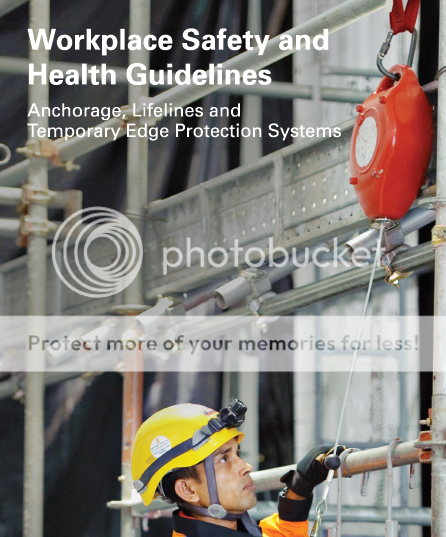Introduction
Falls from heights (FFH) is one of the largest causes of death and injury in the workplace. It is therefore essential that measures are taken to protect workers against the risks of falling from heights.
This guide is developed to help employers and workers who are involved in working at heights to better understand the application of anchorage, lifelines and temporary edge protection as a means of fall prevention.
It is important to note that risk assessment needs to be carried out prior to any work at heights (WAH) activities. Whenever possible, eliminate or substitute any WAH activities. Using temporary edge protection systems (such as guardrails) shall be the first option in designing any fall prevention systems. The use of anchorages and lifelines, with proper personal protective equipment (PPE) shall come second if the option of having temporary edge protection is not feasible.
1.1 What this Guide is About
This guide is relevant for WAH activities. It contains salient points on proper application of temporary edge protection to prevent a fall; and correct anchorages and lifelines to arrest a fall during an accident.
This guide also includes two sections of the structural categories (i.e., ISO tanks and formworks) where the understanding of fall preventions systems (such as having correct anchorage and lifelines) can be applied. After reading this guide, the user should be able to:
• understand anchors or anchor points and their applications;
• understand lifelines and their applications;
• understand temporary edge protection systems and their applications;
• identify correct applications of anchorages and lifelines for formworks; and
• identify correct applications of anchorages and lifelines when working on top of ISO tanks.


No comments:
Post a Comment